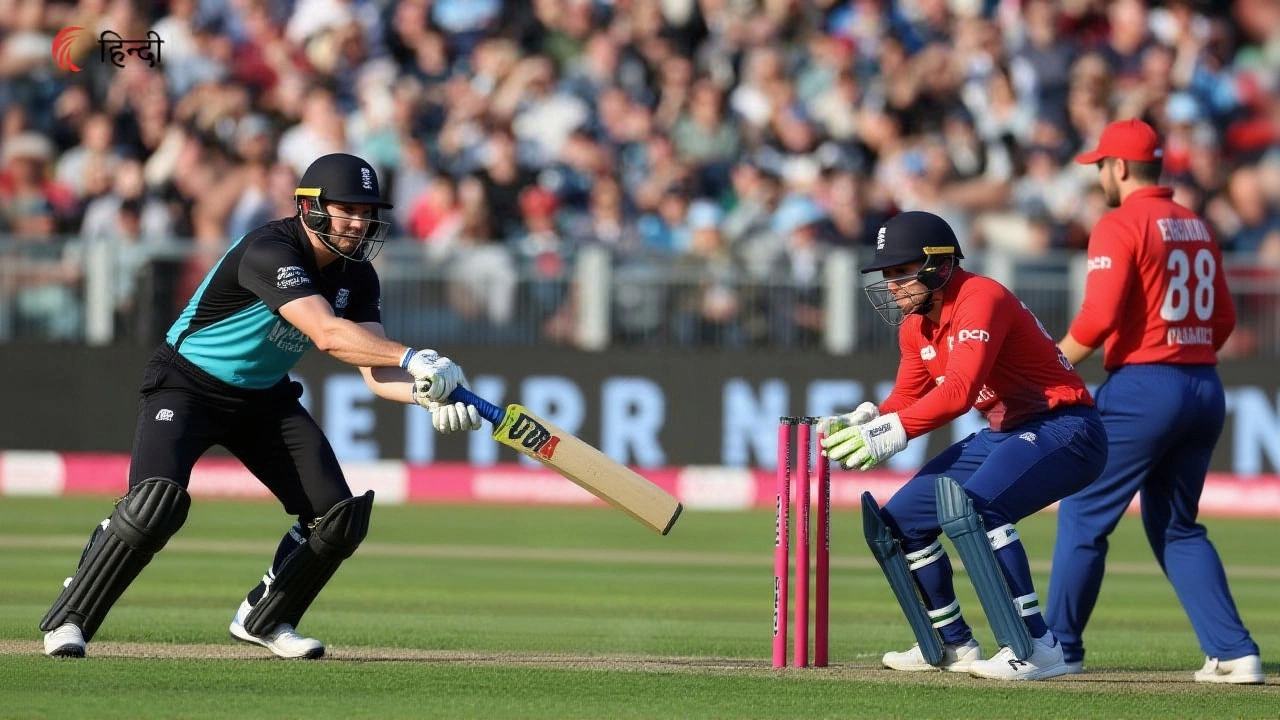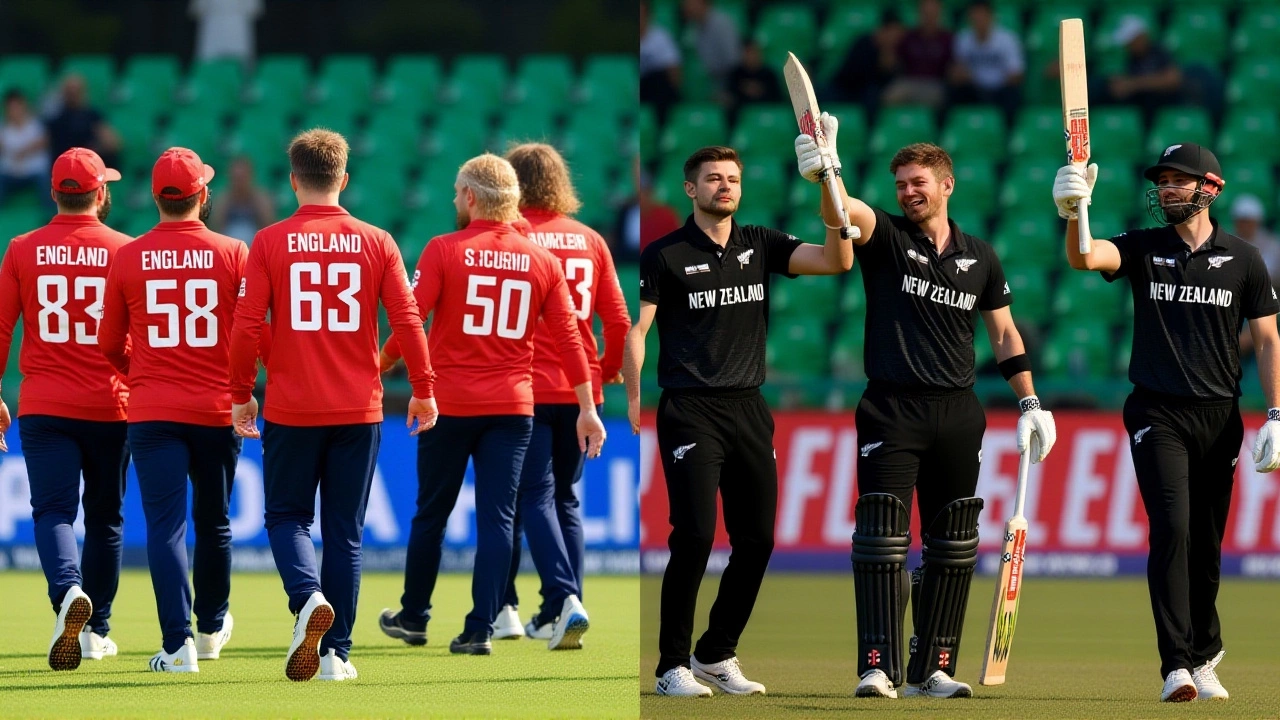When England cricket team walked out onto Bay Oval in Mount Maunganui on 26 October 2025, the odds favored a tight chase, but the match quickly turned into a lesson in how quickly momentum can shift.
The encounter – first ODI of England's tour of New ZealandBay Oval, Mount Maunganui – saw Harry Brook, batsman for England light up the middle with a blistering 135 off 101 balls, yet his heroics were eclipsed by a dramatic tail‑end collapse that left England all out for 223.
Match overview and early drama
England won the toss under the stewardship of Jos Buttler, captain, but New Zealand skipper Mitchell Santner, also an all‑rounder, elected to field first. The hosts' opening bowler Matt Henry made an instant impact, removing wicketkeeper‑batsman Jamie Smith with the very first delivery.
That early wicket set the tone. In the next over, fast‑bowler Jacob Duffy (mistakenly listed as “Foulkes” in some reports) dismissed opener Ben Duckett, then rattled former captain Joe Root for a duck. England were 15‑3 inside the first five overs, a precarious start that put immense pressure on the middle order.
Harry Brook’s century sparks hope
At 25, Harry Brook arrived at the crease with England reeling at 32‑3. What followed was a textbook innings: he mixed textbook drives with fearless slogging, chalking up 11 sixes and 12 fours. By the time he was finally bowled, Brook had taken the score to 135, his second ODI hundred, and briefly pulled England back within touching distance of a competitive total.
His partnership with Somerset all‑rounder Jamie Overton was the innings’ bright spot. The duo added 87 runs for the seventh wicket, with Overton finishing on a career‑best 46. When Brook fell, England seemed poised to post a defendable 260‑plus, but the momentum had already begun to slip.
Collapse of the lower order
After Brook’s dismissal, England lost their last four wickets for just 13 runs. The tail‑end, comprising Liam Plunkett, Sam Cook, and the debutant Harry Miller, offered no resistance. The final score of 223 all‑out in 43.1 overs left New Zealand a very attainable target.
New Zealand’s chase: early set‑backs and a rescued innings
New Zealand’s reply began poorly. Right‑arm quick Brydon Carse rattled the hosts to 24‑3 within the first five overs, even delivering a golden‑duck to the seasoned campaigner Kane Williamson – his first golden‑duck in 166 ODI outings and his first international match after an eight‑month hiatus.
The turning point came when New Zealand’s all‑rounder Daryl Mitchell was offered a catch at mid‑wicket on 33 and the ball slipped. Mitchell seized the reprieve, storming to an unbeaten 78 off 91 balls, anchoring the chase with a steady blend of bat‑and‑blade aggression.
Supporting contributions came from seasoned opener Tom Latham (24) and hard‑hitting Michael Bracewell (51 off 51). Captain Santner added a quick 27 off 25, and the pair steered New Zealand to the target with eight balls to spare: 224‑6 in 36.4 overs.

Key performances and statistical snapshot
- Harry Brook: 135 (101) – 11 sixes, 12 fours.
- Mitchell Santner (c): 27 (25) – 3 fours.
- Daryl Mitchell: 78* (91) – 8 fours, 2 sixes.
- Brydon Carse (ENG): 3/45 – England’s leading wicket‑taker.
- Matt Henry (NZ): 2/53 – early breakthrough.
Implications for the series
New Zealand now lead the three‑match series 1‑0, a shift from the narrow 1‑0 win England claimed in the rain‑trimmed T20I series that preceded this ODI. The win restores confidence in a side that had looked vulnerable after the opening collapse, while England’s bowlers will take heart from Carse’s early strike‑rate but must address the fielding lapses that allowed Mitchell’s rescue.
Both captains hinted at adjustments. Santner praised the bowlers’ aggression, noting, “Matt Henry was outstanding – the swing was lethal. We just needed to keep taking wickets.” Buttler, on the other hand, admitted the batting order’s fragility and promised a re‑evaluation before the second ODI at Seddon Park on 29 October 2025.
Looking ahead
The second ODI at Hamilton will be a decisive test for England’s middle order. If Brook’s form continues, the team could post a challenging total again, but the fielding unit must tighten up. New Zealand will look to replicate the disciplined chase that turned a shaky start into a comfortable victory, and the leg‑spinner Adil Rashid, who claimed a wicket in the final over, will be a key figure on the bowling front.
Beyond the scores, this match underscored a broader truth in modern ODI cricket: a single century can be eclipsed by a handful of missed chances and a late‑order partnership. Fans will be watching closely to see whether England can bounce back or if New Zealand will ride this momentum to a series sweep.
Frequently Asked Questions
How did the dropped catch affect England's chances?
When Daryl Mitchell dropped the catch at 33, New Zealand lost a crucial wicket. Mitchell went on to score an unbeaten 78, adding more than 50 runs to the chase. Without that extra partnership, the target of 224 could have been defended, meaning the missed catch was a pivotal moment that swung the match.
What does this loss mean for England's ODI series outlook?
Trailing 0‑1, England must regroup quickly. The series will now hinge on their ability to post a higher total or bowl New Zealand out cheaply. The bowlers have shown promise, but the batting collapse after Brook’s dismissal highlights a need for more depth and better fielding.
Who were the standout performers for New Zealand?
Daryl Mitchell (78*), Michael Bracewell (51 off 51) and captain Mitchell Santner (27) were instrumental. Their combined 156 runs guided New Zealand to a comfortable win.
What are the key factors to watch in the upcoming second ODI?
Watch how England’s middle order, especially Harry Brook, constructs partnerships after early wickets. Also, New Zealand’s fielding discipline and the effectiveness of their seam attack, led by Matt Henry, will be crucial.
How significant was Kane Williamson’s golden‑duck?
It was a rare early blow for a player with 166 ODI appearances. The dismissal highlighted England’s early bowling threat, but the impact was mitigated by the subsequent partnership between Mitchell and Bracewell, showing New Zealand’s depth.
